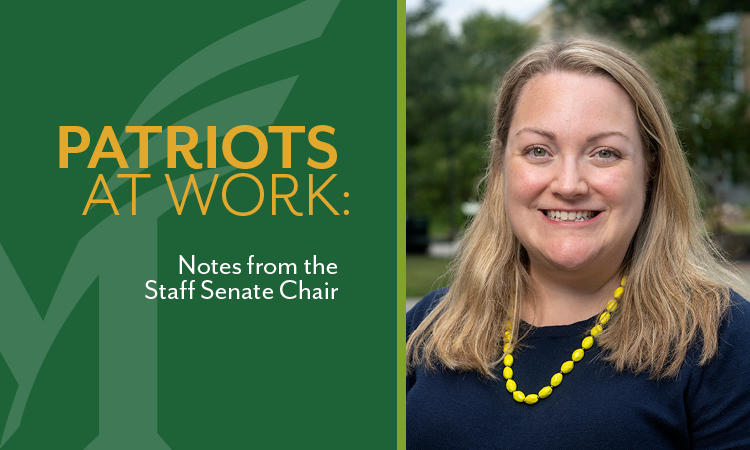When the pandemic is over, what will telework look like at Mason?
Telework has been a crucial way to help slow the spread of the coronavirus and support employees with caregiving responsibilities over the last year. But looking toward the future, we need to start thinking about telework as more than just a pandemic-response measure or an occasional stopgap.
As a university with physical campuses, there are many staff job functions that simply need to happen on site. But the pandemic clearly revealed that many staff jobs can be performed remotely at least some of the time.
Thanks to the efforts of staff in Information Technology Services, Human Resources and Payroll, and others around the university, our technology tools and infrastructure to support teleworking are stronger than ever.
Now that more employees have had the chance to telework, organizations have an opportunity to consider how they can keep the practice in place for both their employees’ benefit and their own. According to a study conducted by Pew Research Center, 89% of telework-eligible adults said that after the pandemic is over, they want to continue teleworking at least some of the time.
Managers can effectively coordinate staff telework schedules so that quality and accessibility of services are not negatively affected. In fact, shifting administrative processes online often makes them even more efficient. Many departments at Mason were already doing this successfully before the pandemic.
Research shows that when implemented in a strategic way, flexible work options like telework play a vital role in enhancing worker retention and productivity. Fewer interruptions and distractions offer a chance for employees to truly focus on their work.
When I ask Mason staff about their teleworking experiences, most talk about the benefits. An overarching theme? The gift of time. Fewer hours spent commuting means more opportunities to exercise, prepare healthy meals, spend time with loved ones, volunteer in the community, and even get more sleep.
Cutting back on commuting also protects the health of our planet. According to Mason’s Greenhouse Gas (GHG) Inventory for FY2019 conducted by the Office of Sustainability, commuting is the second-largest source of GHG emissions at Mason (30.4%), after purchased electricity (34.7%).
In 2019, 78.3% of Mason faculty and staff used single-occupancy vehicles as a primary mode when commuting to work, according to Parking and Transportation’s bi-annual survey. Their average daily commute was 24.1 miles each way—in Washington, D.C., metropolitan area traffic, of course.
And although students account for the largest segment of Mason’s total commuting footprint based on their sheer numbers, staff travel to campus far more frequently than any other group, both in trips per week and weeks per year.
There are things we miss when we aren’t physically present on campus—especially the opportunity for serendipitous interactions with colleagues and students.
But for many staff, it is possible to get the best of both worlds. If the majority of our staff members teleworked a couple of days per week, it could go a long way toward enhancing employee well-being and cutting Mason’s commuting footprint.
This is an opportunity to model the behaviors and values we hope to impress upon our students. Using telework as a strategic initiative beyond the pandemic would signal Mason’s commitment to sustainability and employee well-being—both of which the university cites as core values.

